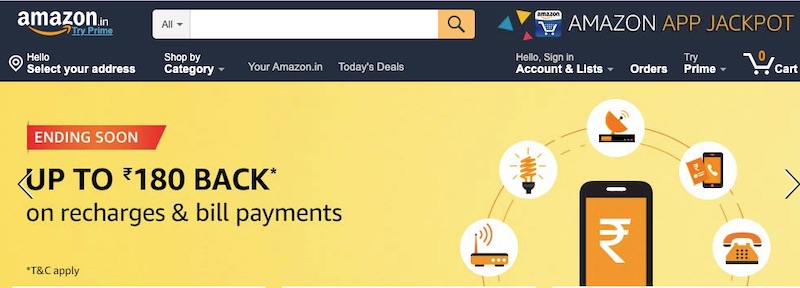
Regulations in India favor local companies. Still, Amazon is the fourth most-trusted brand in that country.
Since entering India in 2013, Amazon has faced entrenched competition and restrictive government policies. Amazon has not achieved the domination in India as it has elsewhere, even with nearly $5 billion invested.
In this post, I’ll provide an overview of the ecommerce industry in India, including recent regulations, local competitors, and Amazon’s performance to date.
New Regulations
India has different regulations than the West in governing how foreign-owned online businesses can operate. Those businesses are not allowed to sell their own products via their own marketplaces. That is why AmazonBasics is a non-starter in India.
Amazon circumvented this rule by buying ownership in large local merchants, which then stocked Amazon’s products and sold them in the respective marketplaces. While Amazon owns nearly half of the products it sells worldwide, that share is zero in India.
New regulations went into effect in February 2019 (see the PDF from India’s Ministry of Commerce & Industry) prohibiting companies that fall under any of these criteria from selling on an ecommerce marketplace:
- The marketplace has an equity stake in the company.
- Twenty-five percent or more of the company’s revenue comes from the marketplace.
- The marketplace “controls” the inventory of the company.
Amazon has joint ventures with two large retailers: Catamaran Ventures (Cloudtail India) and Patni Group (Appario Retail). The above conditions applied to these companies, forcing them to restructure.
Another regulation prohibits the exclusive sale of any brand or product by a single ecommerce site. Amazon has collaborated with Chinese mobile companies Xiaomi and OnePlus to sell their flagship phones via exclusive “flash” sales. Such sales tactics and brand marketing practices are no longer permitted.
Amazon’s revenue growth is projected to slow in the coming months to 15 percent annually from the current 25 to 30 percent.
Overall, the newly re-elected government is aggressive in promoting Indian businesses over foreign competition, especially in the tech industry (with initiatives like Digital India and Make In India). The government is protective of small Indian-based traders and manufacturers.
The government is protective of small Indian-based traders and manufacturers.
Reliance Industries
Mukesh Ambani, India’s richest person, and chairman of Reliance Industries, India’s biggest conglomerate, declared his intention to launch a new ecommerce platform early this year. Speaking at the Vibrant Gujarat summit, an annual event organized by the state of Gujarat, Ambani announced his plan of assembling his companies, including Reliance Retail and Reliance Jio Infocomm, in an initiative that would benefit 1.2 million small retailers and shopkeepers in Gujarat.
“We are creating a hybrid, online-to-offline commerce platform by integrating Reliance Retail’s physical marketplace with Jio’s digital infrastructure and services,” Ambani said. “This platform will bring together 350 million customer footfalls at Reliance Retail stores, 307 million Jio connectivity customers, and 30 million small merchants all over India who will provide the last-mile physical market connectivity,” he added.
This venture, if realized, would start with several advantages.
- Reliance Retail has 10,000 stores in 6,500 cities across India, selling consumer electronics, durable goods, apparel, and groceries.
- Jio, the telecom arm of Reliance, which was instrumental in making India the world’s second-largest internet user base, has 322 million mobile subscribers. It also has roughly 5,000 stores in 5,000 cities, which could serve as ordering, delivery, and collection points.
- Group holding company Reliance Industries (the largest publicly traded company in India) has been in business for 46 years. It knows the Indian market, government, and consumer mindset inside out.
Ambani said the new ecommerce platform would “use augmented reality, holographs, and virtual reality to create an immersive shopping experience,” presumably with Jio’s apps and devices.
Thus Reliance would create an ecosystem that bundled connectivity and streaming media to take on Amazon’s Prime as a core value proposition to consumers. Reliance could also use its extensive domestic presence to bring more merchants (and consequently, customers) on board, similar to Alibaba in China.
Importantly, Reliance won’t be bound by the restrictive laws on foreign ecommerce companies.
Expertise?
Citi Research recently valued Amazon’s India presence at $16 billion. Amazon has 30 percent of India’s $44 billion ecommerce pie (which could cross $100 billion by 2020). Consumers trust Amazon — it’s the fourth most trusted brand in India according to one study.
Amazon has held its own against Flipkart, the large India-based marketplace (now 77-percent owned by Walmart), which has more market share. Amazon has much expertise and experience in running and evolving a scalable digital platform. None of its Indian competitors can make that claim.
In short, don’t bet against Amazon in India.